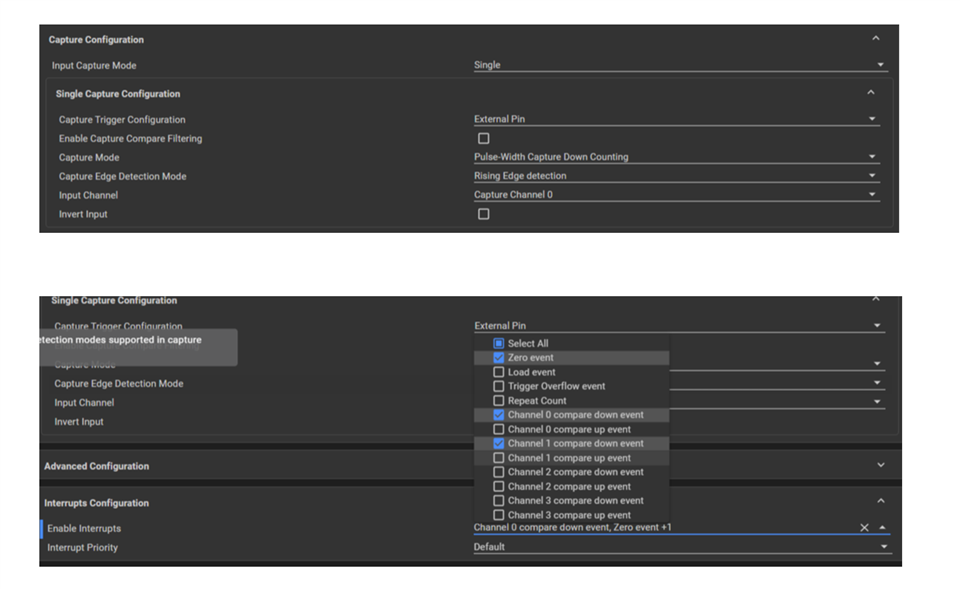Tool/software:
Hi Champs,
I am asking this for our customer.
When using capture, is there any register/driverlib API to know if the input signal is kept in high or low?
For example, if the input PWM signal is 100% duty or 0% duty. How does MSPM0 capture it?
The user's setting like below.



